| HOME |
|---|
MONOCEROS
The Unicorn
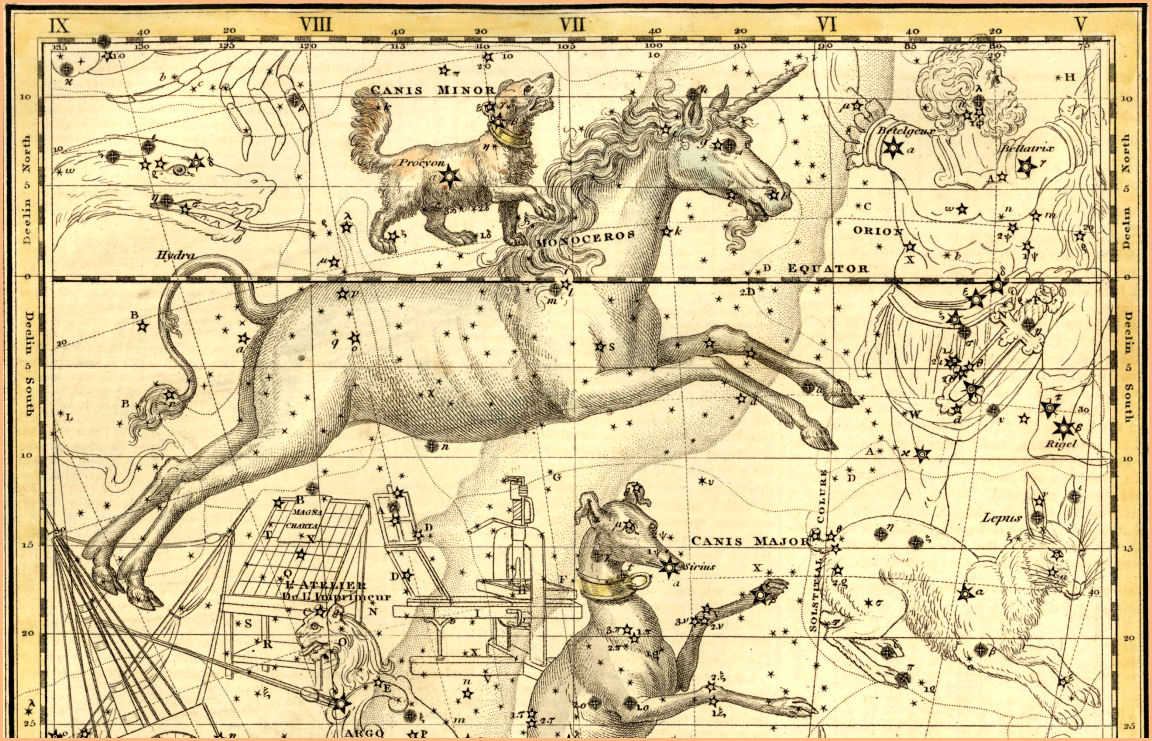
Monoceros - Celestial Atlas by Alexander Jamieson - 1822
| HOME |
|---|

Leaping across the Milky Way between the two dogs Canis Major and Canis Minor is Monoceros, the unicorn, a relatively modern constellation, added in 1612 to fill in the large space between Orion's two hunting dogs. It is a true ghost of a figure, composed entirely of stars dimmer than fourth magnitude, and you will need the darkest of nights to trace its faint outline. But don't let that fool you, the constellation is a very busy place, home to some of the grandest spectacles in the sky.
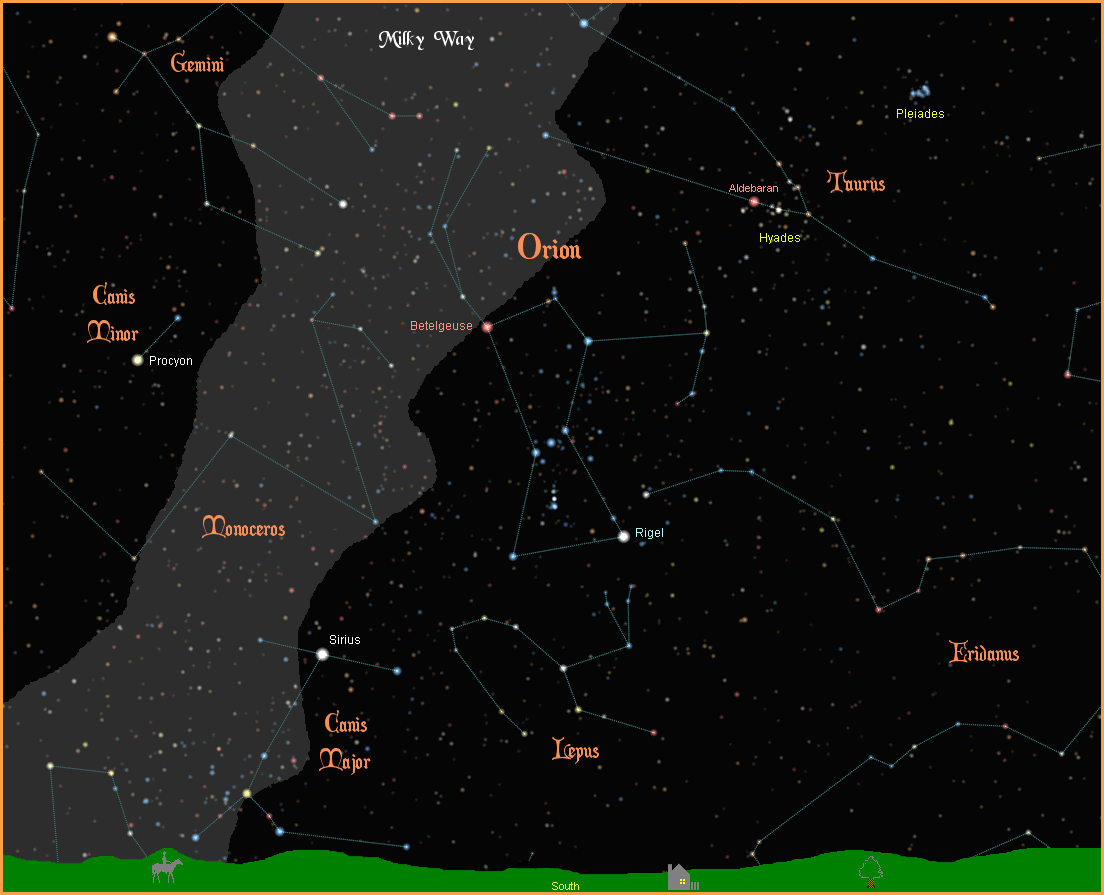
None of the stars in Monoceros are bright enough to warrant names. By the back feet of the unicorn is Alpha Monocerotis, a K0III yellow/orange giant with a relatively cool surface temperature of 4,815 degrees K, 11 times larger than our Sun. From a distance of 144 light years it shines with an unimpressive magnitude of 3.94.

With a magnitude of 3.76, Beta Monocerotis is technically brighter than Alpha Mon, although a naked eye viewer would be hard pressed to mark the difference. The colour difference between the two is much more pronounced, Beta Mon being a pronounced blue, compared to Alpha's orange. Through a telescope, Beta Monocerotis is revealed to be a system of three almost identical stars, all B4V blue main sequence stars, with surface temperatures over 18,000 degrees K. The trio of hot blue stars is very far away, at a distance of 690 light years.
On January 6, 2002, a star appeared in Monoceros where no star had previously been. Within a month it had brightened to magnitude 6.75, and then immediately started to fade, just like a supernova explosion. But unlike these star destroying events that leave behind a hot, dense stellar remnant, spectroscopic analysis revealed a cool, red supergiant star that defied explanation. The star was named V838 Monocerotis (the 838th variable star in Monoceros), and it defies explanation to this day. Its present magnitude is 15.54, which seems faint, until you realize the star is a staggering 20,000 light years away, on the very fringes of our galaxy. The Hubble images below were captured using light echos, reflections on surrounding dust clouds.
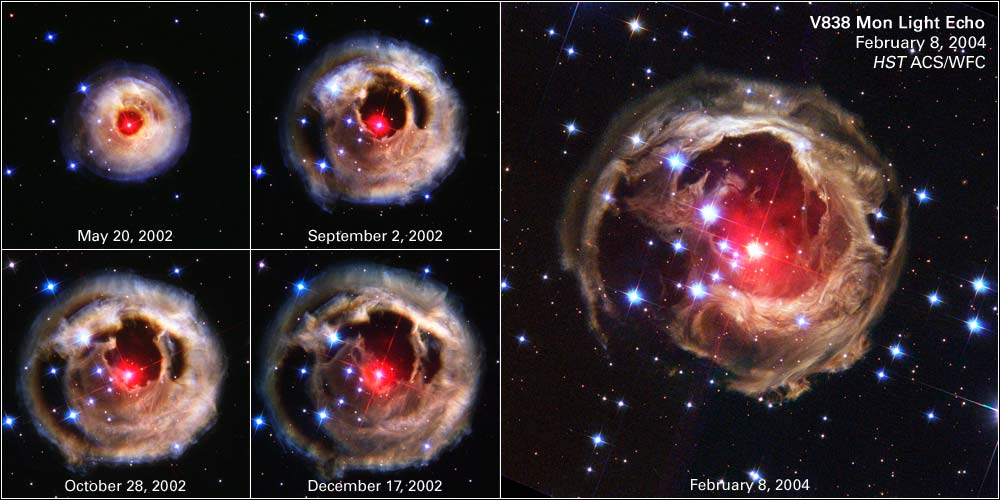
Although none of the stars in Monoceros have names, it doesn't stop them from having planets. There have been no less than sixteen stars with planetary systems discovered so far in Monoceros. Unfortunately, none of these stars is bright enough to see with your naked eye. One star, however, even though its magnitude of 11.7 puts it well out of visual reach, deserves special attention. It was the first star known to have a solid rocky planet like Earth in orbit around it, as opposed to the enormous gas giant planets discovered elsewhere. It was the first definitive proof that there are planets outside our solar system similar to Earth, and a giant leap forward in the search for extraterrestrial life.
The star hosting this Earth-like planet is only slightly smaller and cooler than our Sun. It used to be called TYC 4799-1733-1 but was renamed Corot 7 after the planet hunting French/ESA space telescope, CoRoT, that discovered the planet. The star is a G9 yellow main sequence star, about 500 light years away.
There are now three confirmed rocky planets in orbit around this star. The reason these relatively small, hard to find planets were discovered is because their orbital planes just happen to line up so that from our line of sight the planets transit (pass directly in front of) their parent star. This is the best possible scenario for planet hunters, as it causes significant changes in the light from the star, allowing the detection of planets too small to be found through other means. The first planet discovered is the closest to the star, and named Corot 7-b. It is estimated to have a mass 6 times that of Earth. Corot 7-c is 12 times larger than Earth, and Corot 7-d is thought to be about 18 times larger than Earth.
The bad news is that all three planets orbit very close to their parent star, well inside the habitable zone, and are highly unlikely to host any kind of life as we know it. For more information on these and other exoplanets, visit NASA's New Worlds Atlas and The Open Exoplanets Catalogue.
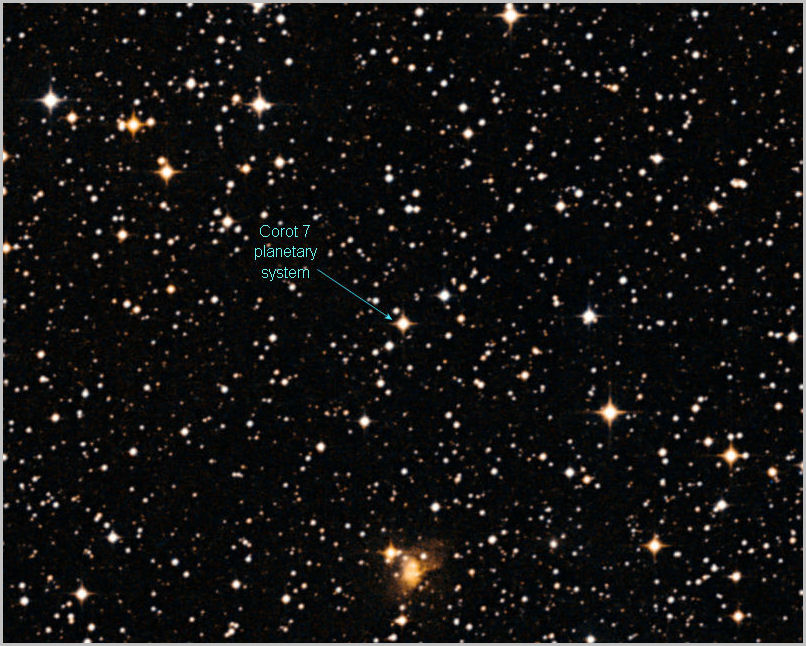
Straddling the rich star fields of the Milky Way, Monoceros is full of dazzling star clusters and spectacular nebulae. Most of these wonders are hidden from the naked eye, but a small telescope can reveal some of the constellation's brighter residents, like its one Messier object, the open star cluster, M50 (NGC 2323). With a magnitude of 5.9, it is easily found in binoculars or a small scope. The cluster contains about 200 stars, 3,200 light years away.
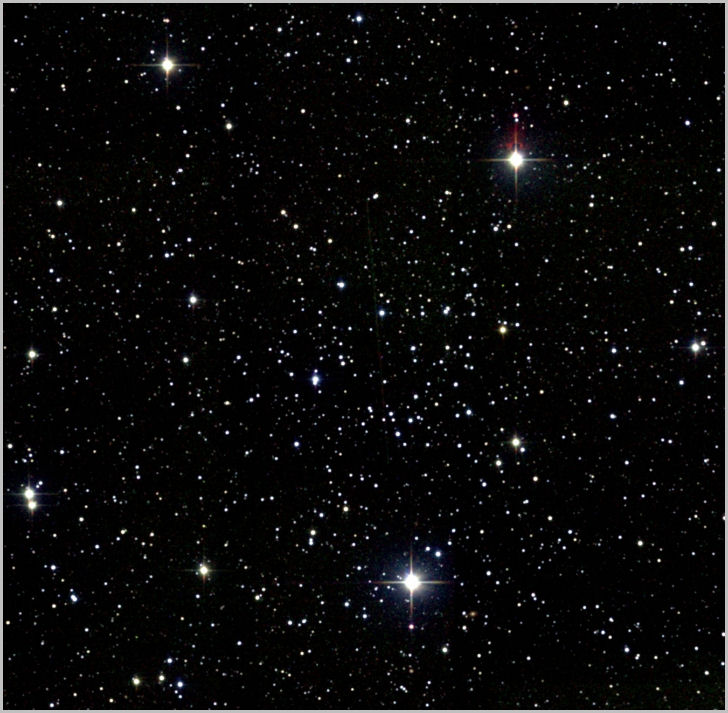
To truly appreciate the sights in Monoceros, we must move into the realm of large telescopes and long time exposures. The ESO image below of the area around the unicorn's head was the result of a time exposure that lasted 16 hours, and shows the true density and complexity of the star fields, with nebulae inside nebulae, and star clusters everywhere. Starting at the top, the 4.7 magnitude star marking the tip of the unicorn's horn, S Monocerotis, is in fact a multiple star system that is part of the Christmas Tree Cluster, which is embedded in the emission nebula, NGC 2264, which in turn is part of a much larger nebula encompassing the entire area. Off to the right is the ghostly blue Dreyer's Nebula (IC 2169/447), and at the bottom of the image, near the nose of the unicorn, is the beautiful Rosette Nebula (NGC 2237).
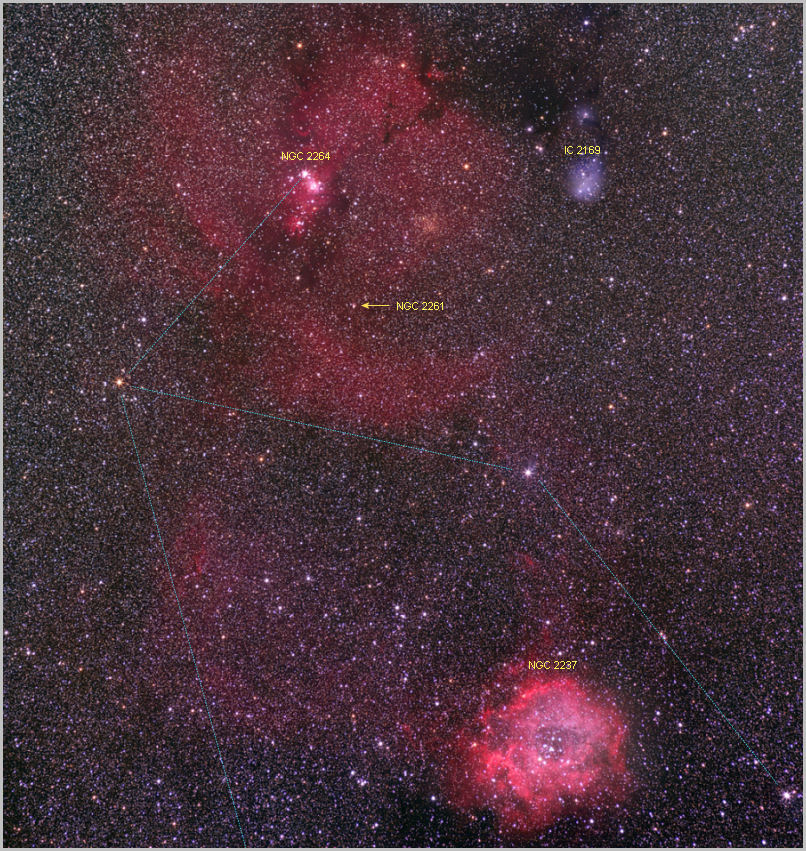
NGC 2264 contains both the Christmas Tree Cluster and the Cone Nebula, seen rising up from the bottom left of the image below. The Christmas Tree is upside down, seemingly balanced on the tip of the Cone Nebula. The star near the tip of the Cone Nebula is the top of the tree, and the blazing star at the very top center of the image is S Monoceros, acting as both the base of the tree, and the tip of the unicorn's horn. Also referred to as 15 Monocerotis, it is classified as double or binary star, but is thought to be a multiple system probably containing as many as eight stars altogether. The entire cluster contains about 40 visible stars, and is about 2,500 light years away. The S Monocerotis star system has a variable magnitude of 4.2 to 4.6, but the ionized gas surrounding it tends to amplify the light, giving the nebula a magnitude of 3.9.
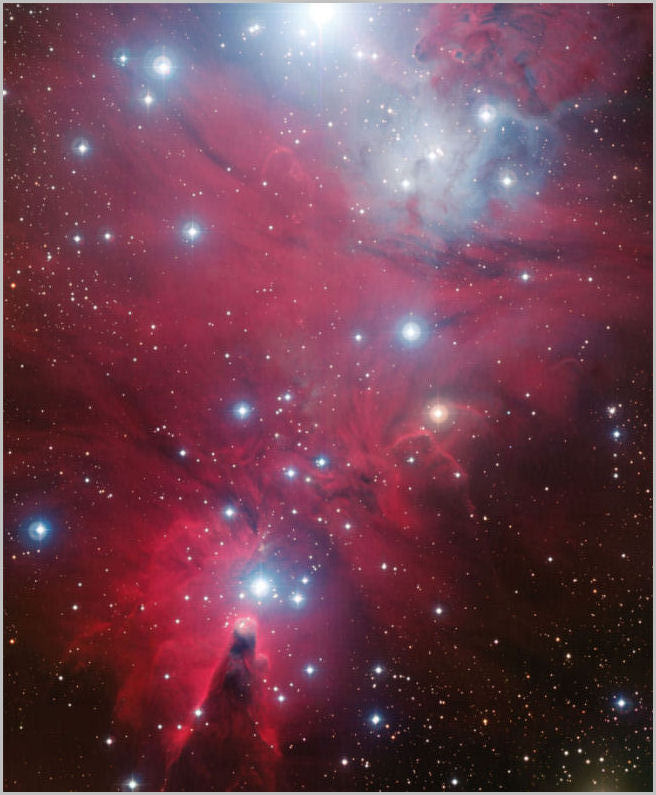
In 2002, the Hubble Space Telescope, orbiting 353 miles (569 km) above us, gave us an extraordinary close-up look at the Cone Nebula.
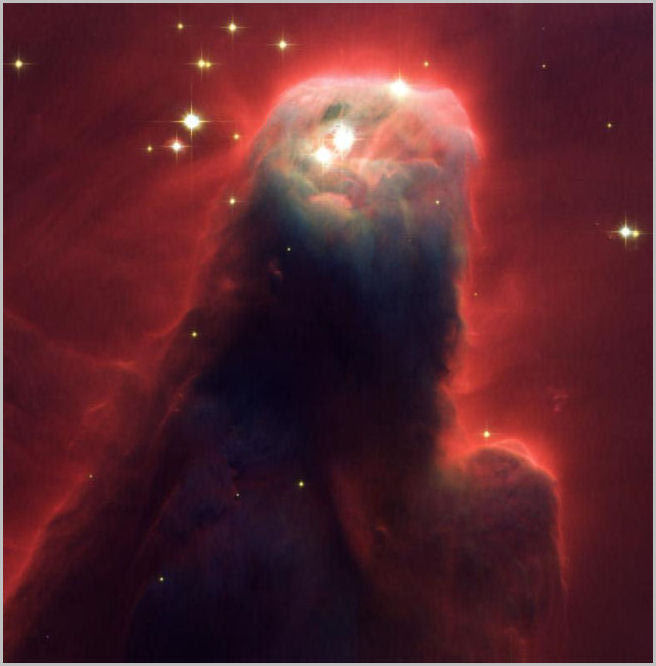
Dreyer's Nebula (IC 2169 or IC 447), is a reflection nebula, apparently mistakenly named twice by discoverer E.E. Barnard. The nebula is centered around the magnitude 7.8 star, HD 46005, about 3,000 light years away.
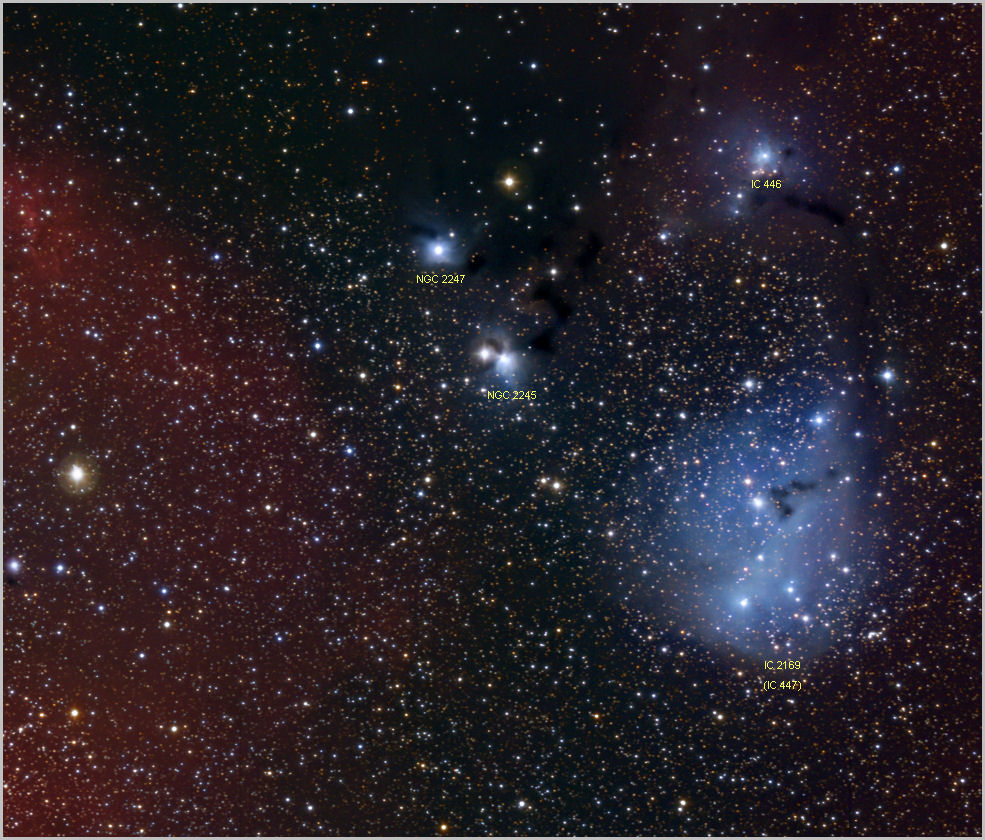
Near the nose of the unicorn resides one of the most beautiful nebulae in the sky, NGC 2237, the Rosette Nebula. Like the Great Orion Nebula (M42) right next door in Orion, the Rosette Nebula is a birthplace of stars. It is a vast emission nebula, an immense cloud of gas and dust over 100 light years across, 5000 light years away. NASA's Chandra X-ray telescope, orbiting 86,500 miles (139,000 km) above us, captured the stunning image below, a composite of visible and infrared exposures, showing the nebula in all its glory. The star cluster in the center of the nebula is NGC 2244. The star cluster has a magnitude of 4.8, while the surrounding nebula is a fainter 5.5.
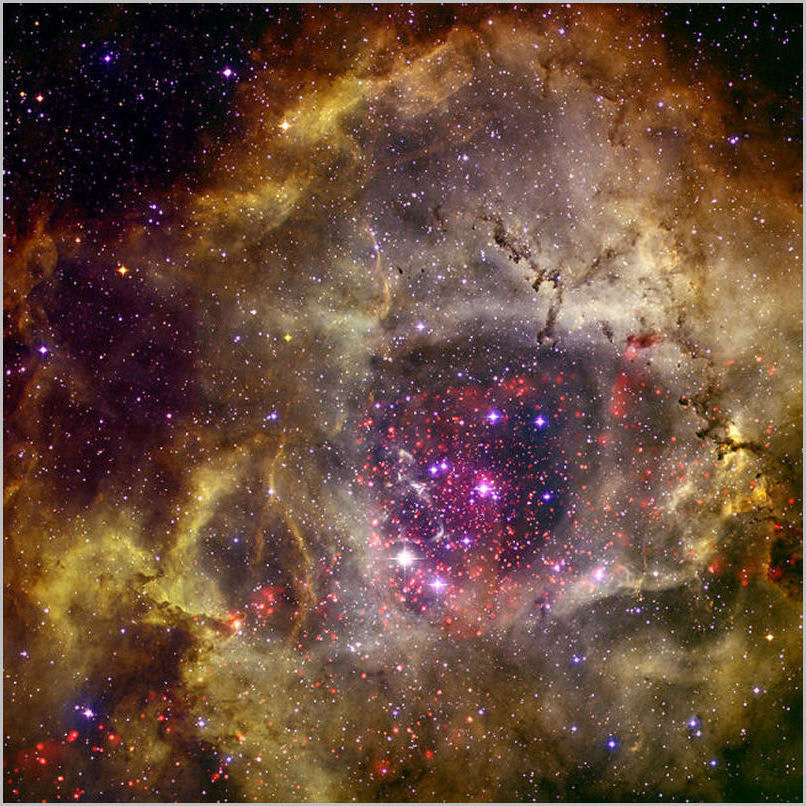
NGC 2261, known as Hubble's Variable Nebula, (named after the famed astronomer who first studied its unique variability), is a mysterious nebula that resembles a comet tail around the star R Monocerotis. It is about 5,000 light years away, and varies in magnitude between 9 and 10. Its form as well, can change significantly over a matter of weeks. It is one of only a handful of nebulae known to consistently undergo such rapid and dramatic changes in both brightness and shape.
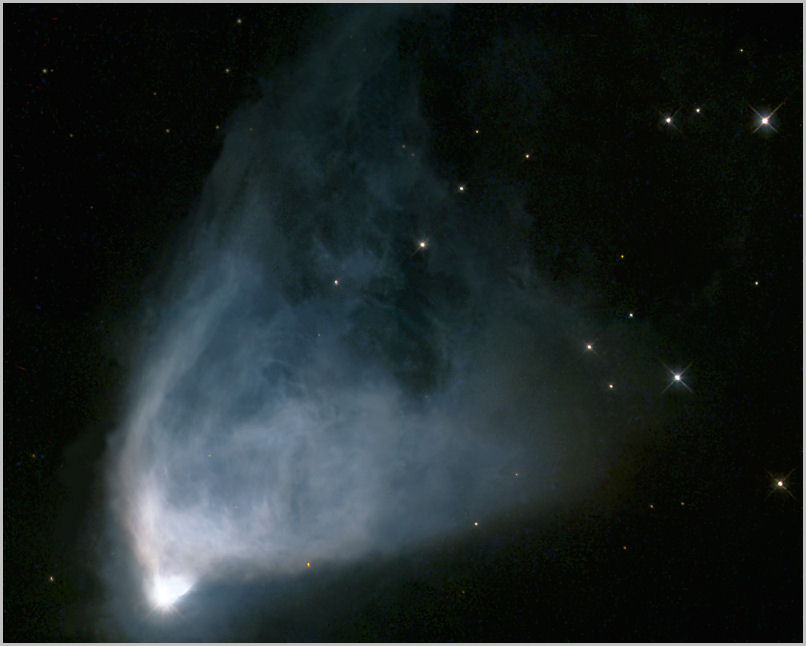
Near the southern border of Monoceros is the large emission nebula IC 2177, known as the Seagull Nebula. A region of vigorous star growth, it is about 3,700 light years away.
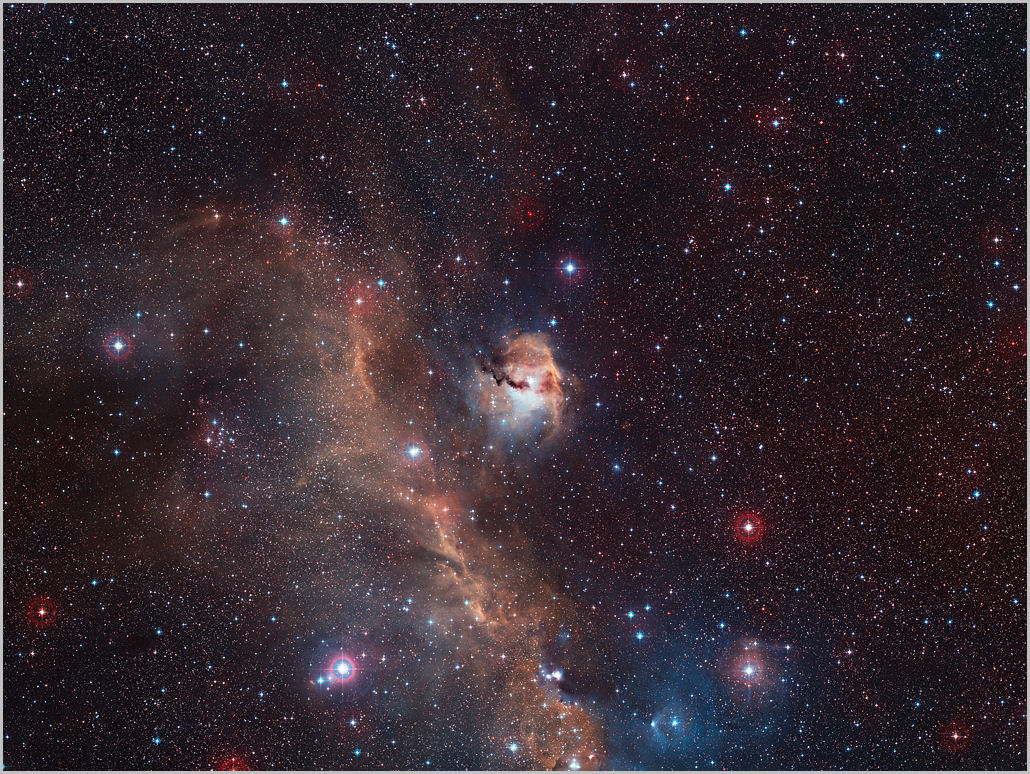
|
|
|
|
|
|